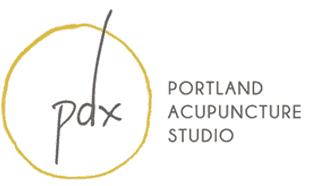Recently, I was listening to Matthew McConaughey’s Greenlights. It’s a fun read, with a passage noting that trends are often fleeting, but “Cool is always cool” (paraphrasing).[1]
Meanwhile, Instagram advertises the latest wellness trends—wearables tracking steps, prepared whole food meals to your doorstep—all based on cutting edge ‘new research’. Though I appreciate that wellness is trending these days, preventing illness through acupuncture using principles of Chinese medicine endures. Yes, Mr. McConaughey, “Cool is always cool”.[2]
When you read about acupuncture in popular culture, it is noted for being helpful to treat muscle aches and pains or headaches which is very true. In many parts of the United States, acupuncture might seem like a new trend. In fact, acupuncture gained steam in the United States after President Nixon’s trip to China in 1972. One of the journalists on that trip, James Reston, wrote about his amazing experience of having acupuncture in China as part of his anesthesia during an appendectomy. Shortly afterward, the FDA approved the use of acupuncture needles for investigational use, despite its use for millennia in China.
Archaeological evidence indicates acupuncture has been used for 3,000 years. In 100BCE, the Huang De Nei Jing (translated as The Yellow Emperor’s Classic) provides a written account of acupuncture with a corresponding system of diagnosis and treatment.[3]
Though most Americans still associate acupuncture for the treatment of pain as an adjunctive therapy, acupuncture and Chinese medicine can treat a range of diseases and illnesses, including but not limited to, asthma, migraines, arthritis, painful or irregular periods, infertility, nausea, and insomnia.
Even better, acupuncture fits within a larger system of theories and practice refined over the centuries using empirical observation and the scientific method. In Live Long Live Well, Peter Deadman illustrates that modern researchers often discover what has been understood in traditional cultures for centuries. He notes the passage from doctor Sun Simiao’s text in the 7th century CE:
“The Way of nurturing life consists of never moving nor standing for a long time, never siting nor lying for a long time … extended lying down damages the qi, extended standing damages the bones, extended sitting damages the flesh, and extended moving damages the sinews.”
Recently, modern research agrees with those conclusions that long-term standing increases the risk of chronic pain and arthritis, while sitting down most of the work day contributes to weakening the body and muscles leading to weight gain. “Recent studies have found that long periods of sitting (no matter how much of the rest of the time is spent exercising) increases the risks of diabetes, cardiovascular disease, cancer and all-cause mortality).”[5]
The trends of having adjustable desks and wearables reminding us to move after long periods of sitting are not only cool but are following traditional knowledge. Though acupuncture and Chinese medicine are ancient, the practices endure in our modern world.
Want to learn more about how the ancient practice of acupuncture can help you? Email us today.
Established patients can schedule online, patients who haven’t seen us at Kwan Yin Healing Center call (503) 701-8766, or email us to schedule your appointment.





